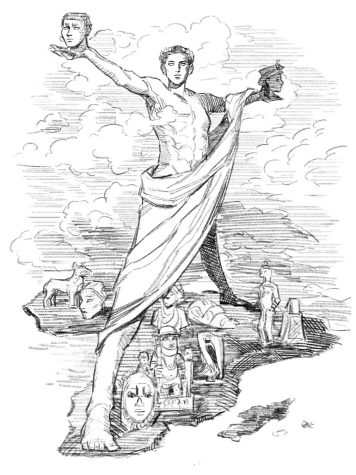The American Dreamers
December 4, 2019
Last week, the long awaited “Dreamers” Supreme Court case began, regarding the validity of the ending of the DACA program by the Trump administration.
The Deferred Action for Childhood Arrivals program, also known as DACA, is a program that was created by the Obama administration, which allows unauthorized immigrants who were brought to the US as children to live and work in the United States as authorized citizens. In the US, there are over 670,000 immigrants who rely on DACA to stay in the US as American citizens.
For the Supreme Court, the question to consider was whether or not the administration provided an adequate explanation for ending the DACA program in their series of memos, not whether the program should be ended. There is very little question whether the Trump administration could end DACA if it wanted to, the only question is whether or not the correct procedural steps to do so were taken. Currently, the Trump administration is trying to wind down DACA and ultimately scrap the program altogether.
On November 12th, the oral arguments were heard from both the prosecution and defense side of the case. However, as it stands, the fate of the DACA program seems grim, as many of the Supreme Court justices side with the Trump administration’s policy to rid the program, especially considering the Supreme Court currently has a conservative majority. However, if the Trump administration does lose the case and the DACA program stays, it is likely that the decision would be quite close.
During the oral arguments, many of the justices repeated the same concept of “reliance interest.” Essentially, this refers to the idea that if the government wants to end a massive policy that a large amount of people have relied upon, they need to provide a complete explanation as to why this policy shift should be justified. Because the fate of nearly 700,000 immigrants relies on the DACA program, there have been many arguments regarding whether the administration provided a thorough explanation.
When questioning both sides’ attorneys, all four liberal justices shared the similar worry that the administration did not meet the burden of reliance interest when explaining why they wanted to end the program. On the flip side, conservative Justice Samuel Alito, Neil Gorsuch, and Brett Kavanaugh shared this worry as well. In particular, Gorsuch seemed concerned that the administration was not providing a full explanation regarding their decision to end DACA. Chief Justice John Roberts signaled that he was bothered by the broad range of discretion over immigration policy that was claimed by the Obama administration when the DACA program was begun. Justice Clarence Thomas did not ask any questions during the oral arguments; however, this follows Thomas’ typical practice for first day arguments, as he is known to be a very quiet justice altogether.
Regardless of how the court rules, it seems that the reality for DACA recipients remains quite bleak. This is due to the fact that even if the Trump administration does not meet the burden of reliance interest, they could easily continue their efforts to end DACA by releasing a memo that has an adequate explanation of why they chose to do so. The Supreme Court’s decision thus becomes the difference between an immediate end to the program or a possibly more prolonged wind-down.


